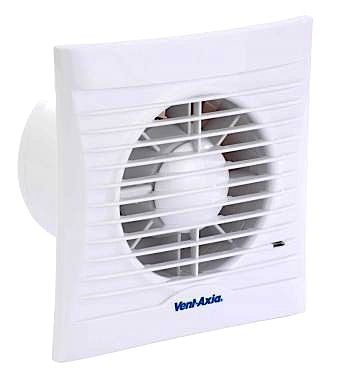Norm asks this question, which concerns a bathroom fan installation as part of a lighting circuit - and its protection. It has been answered by the ECA (Theme – Distribution Equipment including Cable Management):

This Q & A is one of thousands posted in our Technical Expertise area, and answered on a daily basis by our Voltimum Experts.
Question: When installing a bathroom fan as part of the lighting circuit off a 6A MCB, is it really necessary to include a fused spur for protection? And if so, is that required as well as a three-pole fan isolator switch?
If it is necessary, then maybe it’s about time that fans were designed ready to be installed into the 6A lighting circuits, because that's where they are usually used - or possibly fan switches that incorporate two fuses (one for the live and one for the S.W. live).
Answer: A bathroom fan supplied from a 6A MCB may need further protection in accordance with the fan manufacturer's recommendation. So an installer needs to refer to their recommendations for guidance and take them into consideration.
These can vary from 3A down to 1A, or there may be in-built thermistor protection that will allow direct connection to a 6A MCB. It is important to ensure adequate protection, as there have been incidents of fires after the fan impeller has seized.
If the need is to fuse down, then one way of achieving this is to fit a fused spur unit into the circuit. The fan also requires a local means of switching off for mechanical maintenance (537.3.2.4), and hence the spur unit is usually a switched fused spur unit for this purpose.
However, the neutral does no longer need to be switched (537.3.2.5) and, therefore, a standard switch fused spur should suffice, unless there is a permanent live also required; in which case the switch will need to be double-pole.
The isolation requirements are covered separately under 537.2 and are usually catered for within the consumer unit / distribution board arrangement.
In TNS and TNC-S earthing systems, where the neutral is reliably connected to earth by a suitable low impedance, it can be a single-pole device (537.2.1.1). In a TT earthing system this is not usually the case and a double-pole device will be required. As the means of isolation is likely to be remote from the bathroom fan position, the device must be lockable in the open / off position (537.2.1.5).
To see many more Q & A in Voltimum UK's Experts Area, please click on the link. Experts from leading organisations provide online answers to your technical questions on a broad range of subjects. Our searchable database of existing Q & As now contains over 3,500 entries; you can browse through them here.
